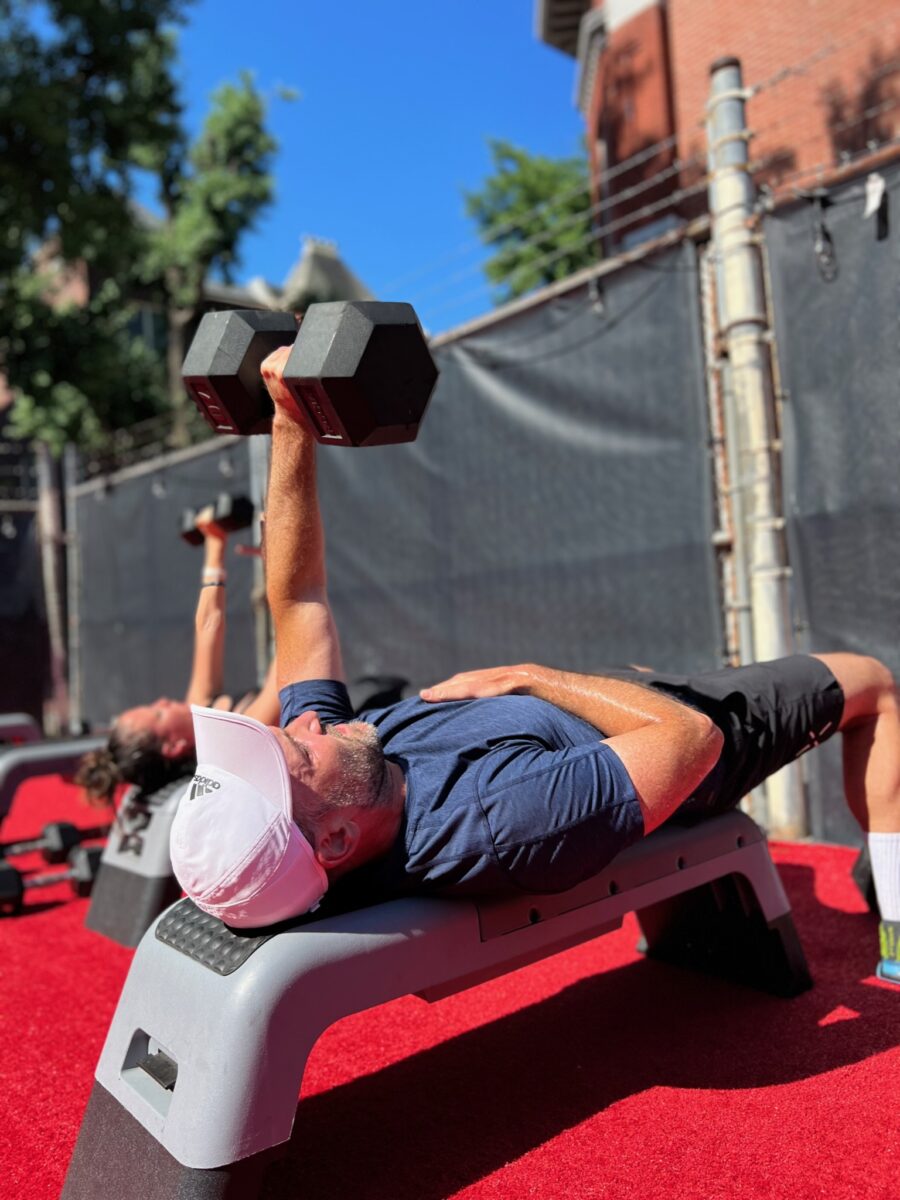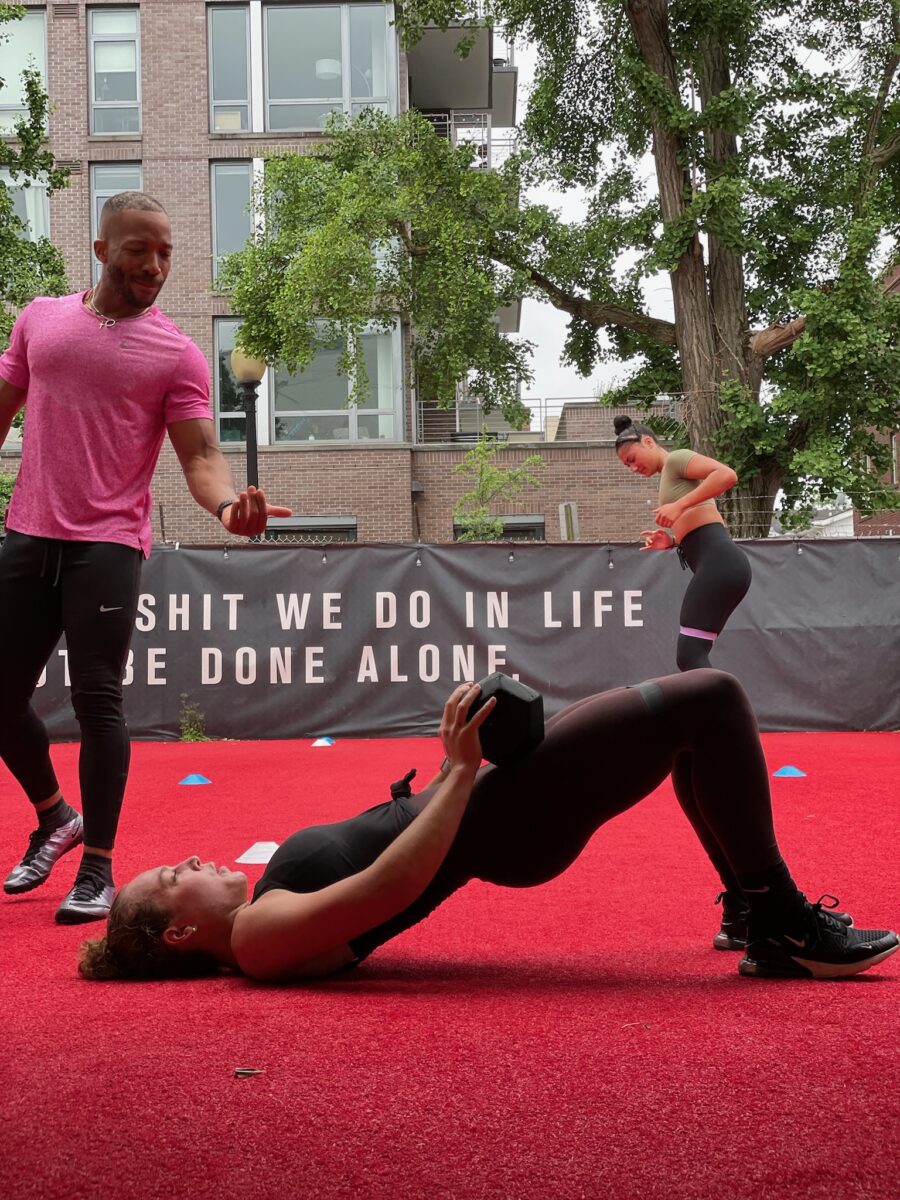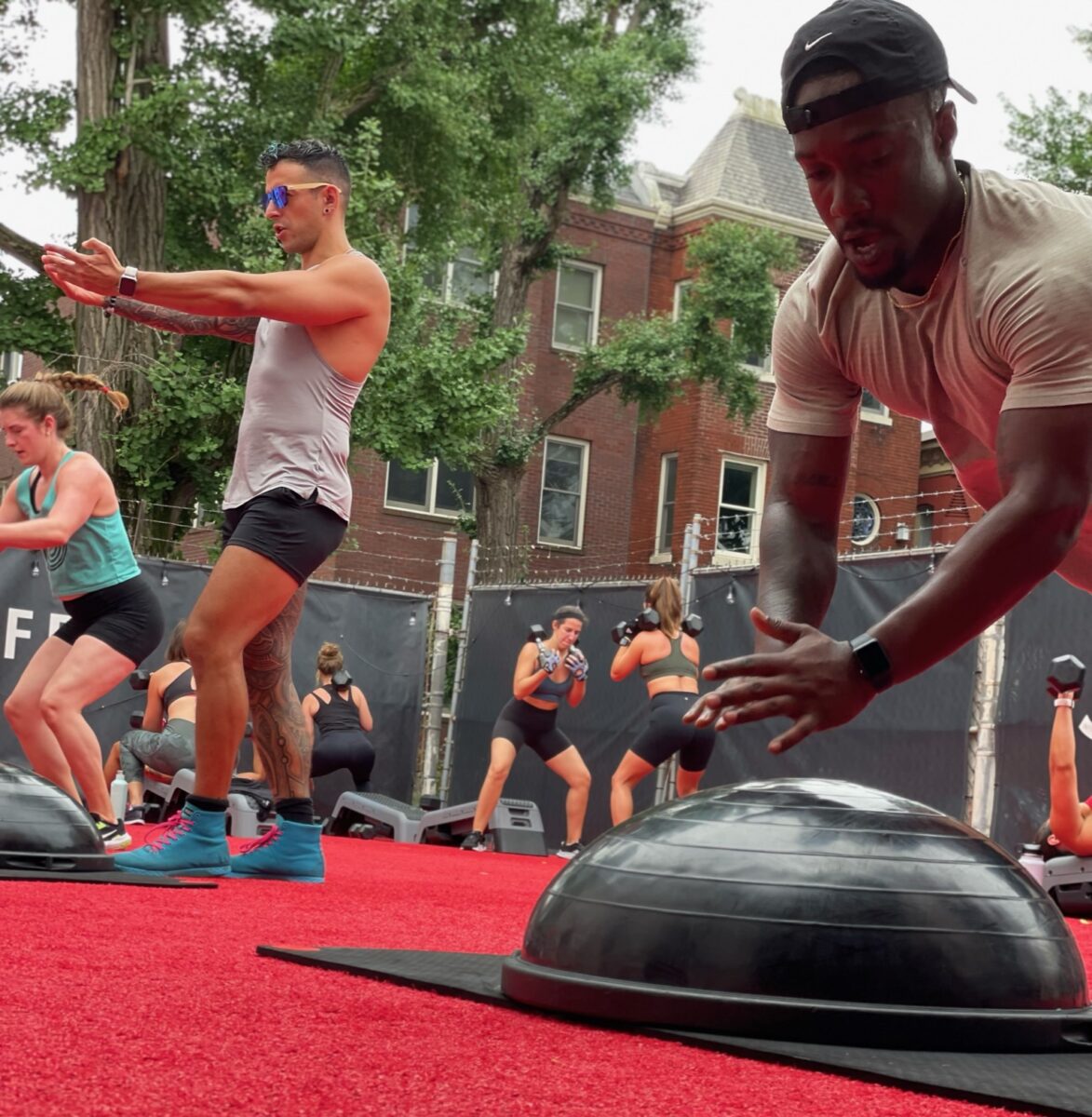How a Workout Built for 300 is More Effective than a Personal Trainer

If the owners and coaches wanted it to be, Cut Seven could be the hardest workout in the world.
—If that’s what they wanted.
It doesn’t take a certification in personal training or masters in exercise science to design a hard workout. Any gym or coach is capable of exhausting an athlete—all it takes is packing their toughest exercises into a single class.
Cut Seven is a tough workout. Period. But the purpose of a Cut Seven workout is not to be hard, simply for the sake of being hard. The purpose of one Cut Seven workout is to exist as a piece to a much larger puzzle: the Cut Seven program. The Cut Seven program is designed to progress every athlete in a way they could only find with a personal trainer, but in a much more powerful environment.
There are a lot of behind-the-scenes debates, brainstorming, and endless pacing in an otherwise empty studio that goes into building the Cut Seven program. This post is meant to give you a glimpse into every thought and intention that goes into progressing your fitness level, all while keeping you injury-free.
Of Everything That Goes Into Cut Seven’s Programming, Injury Prevention is the #1 Goal
If the coaches’ only goal was to crush us in a workout, they could hit that goal each day of the week. And it would require far—FAR—less thought or effort than what’s currently put into the programming.
There are six eyes, from three trainers with very different brands, looking at the Cut Seven schedule. The program is broken down by month, week, day, individual exercise, then individual athlete; all of which will be explained throughout this post.
Everything about the program comes down to this question: How far can we push you to make you better, without risking an injury? The answer determines which muscle groups are targeted when, and which specific exercises are chosen for those muscle groups.
**And one final disclaimer before we dive into the ins-and-outs of how the program is built: The schedule is posted online for a reason—so use it. If you love hitting SoulCycle, decide to train for a marathon, or love any other form of activity; great. Use the schedule to plan accordingly.
Find a Balance Week-Over-Week (And Day-to-Day)

At first glance, the online schedule appears as nothing more than a muscle mix-and-match game. You might think we write a month’s worth of workouts with the following three criteria in mind: Alternate between upper body and lower body; put distance between Heart Day and full-blown Legs; don’t put Legs and Hammys next to each other.
No, it’s not that simple. There are always those rare exceptions where those three guidelines are broken—and it is 100% intentional, every single time.
The schedule starts with the programming team looking at the previous month, analyzing what went well, what muscles were overloaded, and what needs to be tweaked. From there, it’s a thirty-day chess game to find a balance between the weeks and individual days. And it’s not just about finding a balance between the muscle groups we hit, it’s about finding a balance in the level of intensity.
Example — Balance the intensity: If a given week is cardio-intensive (think multiple Heart Days), the following week will be more strength-focused. The level of intensity varies to prevent athletes from exhausting themselves, while still allowing them to progress.
Set An Intention or Goal Each Week
So what happens those weeks—which we all remember, quite vividly—where we hit Ass, Hammys, Legs, and Heart? Did we just…fuck up?
Those weeks are not mistakes. Each week (and month, for that matter) is programmed for specific goals, whether to overload the legs, burn us out on cardio, or strengthen the chest.
“Every time we write the schedule, we’re using these imaginary athletes—like the 6AM-crazies—anticipating the questions they’ll ask us,” says Chris, “I already have a rebuttal to those questions, because I have to be two steps ahead of three hundred athletes.”
Rarely will two lower body days fall on back-to-back days, but it does happen—intentionally. For example, if Legs and Ass fall on back-to-back days, there are ways to alter a workout so it still fits within the program.
Example — Isolate muscle groups: On Ass Day, each exercise can completely isolate the glutes, allowing you to go ham in the workout even if you did Legs the day before.
Aim for Muscle Failure, But Not to The Point Where An Athlete Can’t Return the Next day

“All of the coaches constantly give feedback on workouts and what they see in class,” says Chris. “We talk a lot about what each of us did the previous week, and what we plan to do the following.”
Selecting exercises for the Cut Seven program is not as simple as eliminating what’s already been done. Instead, it’s about anticipating what a particular exercise will do to our muscles, and how that impacts upcoming workouts.
The Cut Seven program is backed by an understanding of the human body. Each workout is designed to burn-out an athlete, but not to the point where they can’t return the following day. If Leg Day falls on a Thursday, we will have to consider how pushing a sled will impact us on Heart Day. If you take the reverse scenario, with Leg Day falling on a Sunday, we will likely leave out green banded sprints on Heart Day, which might destroy the legs for the following day’s workout.
The program is designed to allow athletes to build up to six workouts per week. “We don’t want to ever be the reason someone skips a workout,” says Chris. “If someone thinks, ‘I can’t take Hammys because I’m gassed from Legs,’ trust me—we programmed around that.”
Example — Consider the previous and following days’ workouts to program today: Many ab exercises, like planks, can also burn-out the shoulders. If an Abs Day falls on Monday, and Chest Day is on Tuesday, plank exercises will need to be limited on Monday to preserve the shoulders for Tuesday.
Don’t Allow the Athletes to Plateau
It is important to build a balanced program, but if Cut Seven posted an identical schedule week over week, and kept every muscle group perfectly in balance, all of us would hit a plateau.
“We don’t want anyone to plateau. Muscle confusion is good for continuously challenging the body. If you do the same thing all year, eventually you will hit a ceiling—and at Cut Seven, we don’t want that ceiling to exist.”
When we, as athletes, go on autopilot or appear too comfortable, the program will change to continuously challenge us and our bodies. Creative moves we’ve never done before, halftimes between stations, or a week stacked with three lower body days are intentionally worked into the program to make each of us better.
Program for the Group; Coach for the Individual

Cut Seven is built for 300 different athletes, with 300 different levels of fitness and 300 schedules. It is structured for those who come six days a week and those who come three, and if you’re wondering how that’s possible, it comes down to the people in the room with us.
“As coaches, we implement each class so every athlete can see change. That’s our fucking job—to know you. We anticipate your next move before you even make it.” If an athlete instinctively grabs a lighter weight, the coach will push them to grab a heavier set if their form is perfect. They know their injuries, schedules, and even the way they avoid eye contact when they’re not “feeling it” that day.
The coaches adapt and find opportunity within a general program, making it personalized to every athlete. But when the coach calls out a finisher we don’t think we can complete, stacks two boxes we don’t think we can clear, or picks up a weight we don’t think we can lift, it’s the people around us who push us through.
The programming of Cut Seven is the science, but the people are the motivation.
“I could take the entire year schedule, plop it into next year, and it still wouldn’t feel the same,” says Chris, “It’s a credit to the people in the room. As the group progresses, so does the individual. We make each other better without even realizing it.”